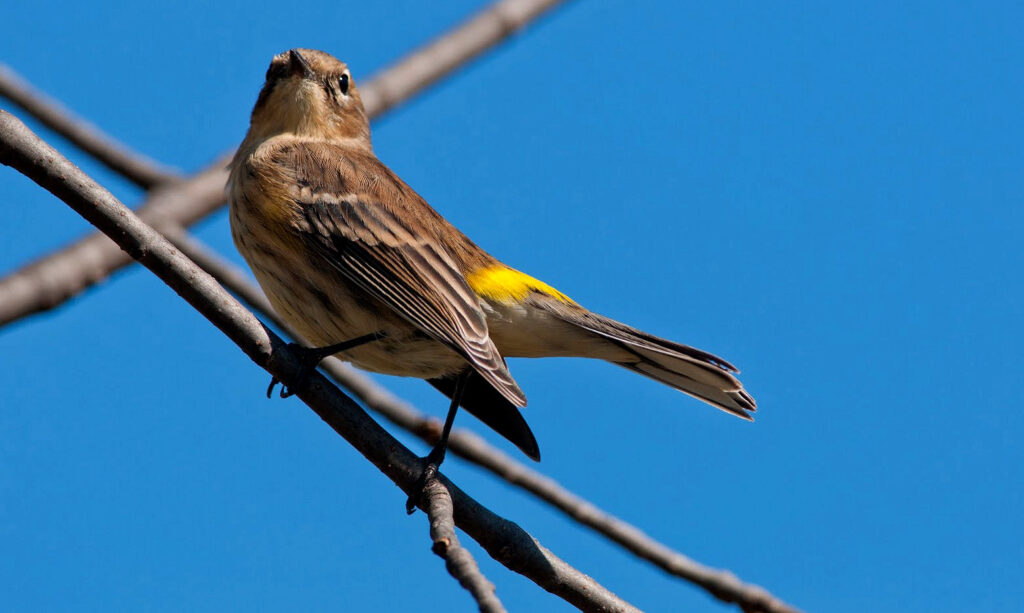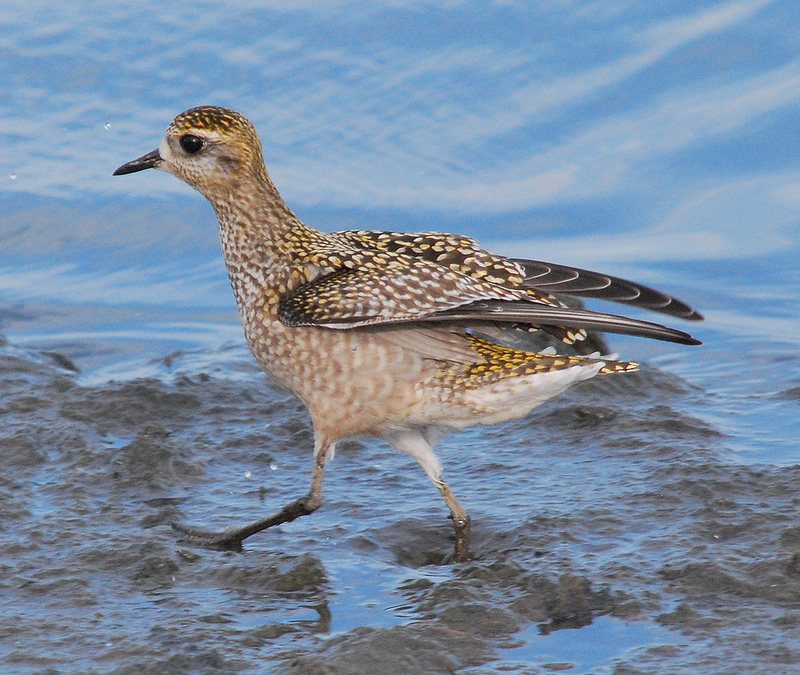Prince Edward County, Ontario, Canada
In October, What Bird Species Can We Expect To See?
As September was a month for fall warblers, October is the month for sparrows. Any walk along a roadside or across a weedy meadow this month will often flush countless numbers of them as they feed upon the ripening seed heads of weeds. We may find CHIPPING SPARROWS, VESPER SPARROWS, WHITE-THROATED SPARROWS, WHITE-CROWNED SPARROWS, FIELD SPARROWS and SONG SPARROWS. With them may be DARK-EYED JUNCOS or newly arrived AMERICAN TREE SPARROWS from the far north. Most will not be in full song and will confuse many an observer with their abrupt call notes. DARK-EYED JUNCOS are already here in ones and twos, and have been since at least the last week in September.
October usually brings the first killing frost, forcing many insectivorous birds such as warblers, vireos and swallows to take their departure. One exception will be the YELLOW-RUMPED WARBLER which may persist in small numbers into early November, some even wintering in the Bay of Quinte region. These amazing little warblers switch from an insect diet, to spiders in October when insects are few, to red cedar berries and other fruits when the winter snows start to fall.

Shorebirds, however, will still be passing through, and while the Bay of Quinte region does have some suitable areas where shorebirds may be viewed, the best viewing stations are at nearby Presqu’ile Provincial Park. Here you may spot some of the earlier migrants still lingering about, together with AMERICAN GOLDEN-PLOVER, BLACK-BELLIED PLOVER, DUNLIN, and possibly RED PHALAROPE and RED-NECKED PHALAROPE. Lower water every fall has provided some favourable feeding locations though in our area, especially at Prince Edward Point. Another good area to keep watch on is the mouth of the Outlet River where more than a dozen species can be tallied. But, in your seek for these marvels of migration which takes these shoreline feeding birds from their breeding grounds in the sub-Arctic tundra to wintering grounds as far south as Argentina, don’t overlook other suitable areas. The Ducks Unlimited water containment areas at Gull Pond and Lighthall Road, south of Army Reserve Road in the Point Petre area can offer some great species—an uncommon LONG-BILLED DOWITCHER was found there in August one year (The short-billed species is the one more commonly seen). Wherever you see a mudflat caused by receding water in the fall, check it out. You may be surprised at what is feeding there.

This is also the season for hawks, and points of land such as Prince Edward Point, Point Petre and Salmon Point, as well as the dunes area of Sandbanks Provincial Park, can offer some excellent viewing opportunities as this family of birds makes its way along the shoreline of the county. Large numbers of SHARP-SHINNED HAWKS, COOPER’S HAWKS, NORTHERN GOSHAWKS, RED-SHOULDERED HAWKS, and RED-TAILED HAWKS may be seen if conditions are right. This is also the month when we might see the arrival from the north of the ROUGH-LEGGED HAWK.
Actually there will be quite a few birds arriving from breeding grounds far to the north of us in search of more profitable feeding areas. In addition to the AMERICAN TREE SPARROWS, we may also see a few SNOW BUNTINGS, as well as PINE SISKINS as they pass through the area.

Some northern ducks will be showing up too this month including both GREATER and LESSER SCAUP, LONG-TAILED DUCK (formerly Oldsquaw), COMMON GOLDENEYE and BUFFLEHEAD.
There will be lots of movement in the shrubs and wooded areas as numbers of AMERICAN ROBINS, EASTERN BLUEBIRDS, VEERYS, GRAY-CHEEKED THRUSHES, SWAINSON’S THRUSHES, HERMIT THRUSHES and WOOD THRUSHES exploit these areas for available food as they work their way south. Owls like EASTERN SCREECH and GREAT HORNED may be heard calling at night. GOLDEN-CROWNED and RUBY-CROWNED KINGLETS will still be passing through this month as well as WINTER WRENS and a few other species.
Bird feeders in operation this month will start attracting numbers of BLACK-CAPPED CHICKADEES, BLUE JAYS and WHITE-BREASTED NUTHATCHES as these species shuffle about in search of feeding areas that will help sustain them through the three lean months of the year. RUBY-THROATED HUMMINGBIRDS may continue to linger into the 2nd week of October; hence, the importance of leaving the hummingbird feeder up until all signs of hesitating individuals are gone. The late departing females and young of the year will appreciate the extra offerings as cold and frosty nights deprive them of insect food. Pay particular attention to your hummingbird clientele for any hummingbird vagrants such as the rare RUFOUS HUMMINGBIRD. And when out in the field, keep your eyes peeled for other vagrants that may appear.
While October is a month when the majority of birds passing through offer nothing more than a few unidentifiable call-notes, others like the WHITE-THROATED SPARROW, EASTERN PHOEBE, SONG SPARROWS, FOX SPARROWS and RUBY-CROWNED KINGLETS return for an encore, delighting us with a few spirited renditions of their spring songs.

October is one of the more pleasant and colourful months as these birds flit among the reddening foliage of staghorn sumac and yellowing leaves of prickly ash in search of insects lured out by warm, sunny days. The short call notes and flashes of yellow from lingering YELLOW-RUMPED WARBLERS are familiar sights and sounds at this time of the year, but are firm reminders that once November rolls around, much cooler weather and dwindling food sources are not far behind.